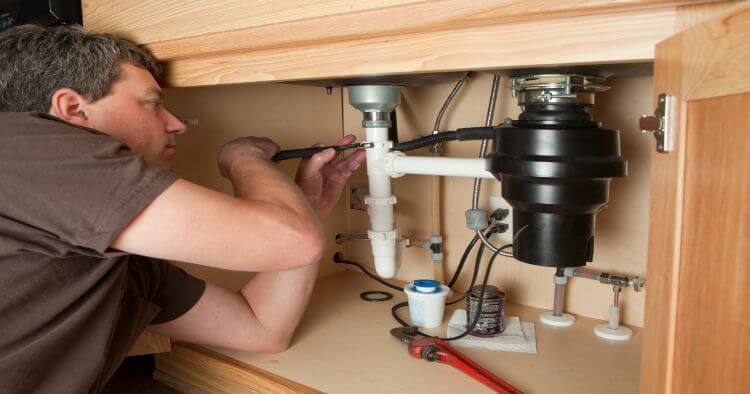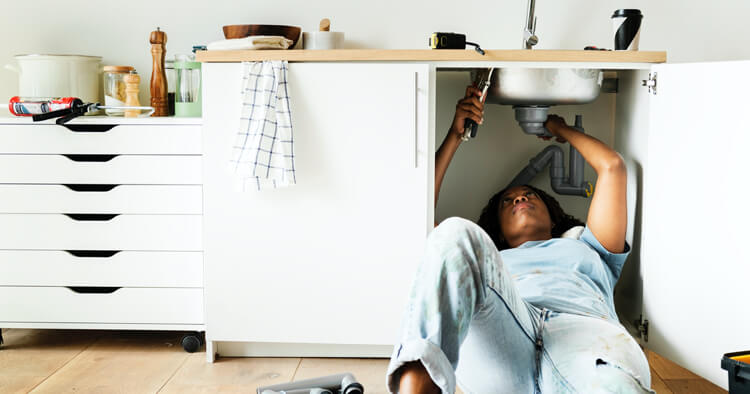How to Clean a Dishwasher
Got a dishwasher that seems a bit smelly or is leaving a weird film on your dishes? The simplest and easiest solution to this problem is just learning how to clean your dishwasher. With a few basic tips, you can make sure the inside of your dishwasher is sparkling clean.
How Often Should You Clean Your Dishwasher?
Many of us can admit to not cleaning our dishwashers as often as we should. Most people just do a deep cleaning every now and then, but it turns out, everyone should be cleaning their dishwasher on a monthly basis! Appliance experts explain that cleaning the dishwasher each month helps it run more smoothly and reduce the need for dishwasher replacements. You can delay a little if you are not using the dishwasher every day, but it still needs to be done fairly often. If you notice any smells, mold, mildew, buildup, or dirty dishes, it's definitely a sign you need to clean the dishwasher.
What Is the Best Way to Clean a Dishwasher?
There's a bit of debate on the best way to clean a dishwasher. Some people like to clean their dishwasher with vinegar or other natural materials, while others like to use a store-bought dishwasher cleaner. Either option works fine according to Good Housekeeping, so just pick whichever method is easiest for you. As long as you're making sure to clean the filter and scrub the interior, your dishwasher will remain in great shape.
Tools and Materials Needed
Learning how to clean a dishwasher does not have to involve any unusual or pricey tools. It can typically be done with items you have lying around your home. You will need:
- Your chosen dishwasher cleaner
- A dishwasher-safe cup
- A sponge
- Soap
- A dish brush
- A microfiber rag
- Baking soda
- Stainless steel cleaner (optional)
- Cleaning gloves (optional)
Step-by-Step Guide
Cleaning a dishwasher isn't usually dangerous, but when working with chemicals, always follow the instructions on the label carefully. You may want to wear gloves to protect your hands from contact with hot water and harsh chemicals.
1. Clean the filter and drain: Start by pulling out any debris from the dishwasher drain, then take out the filter and clean it in the sink. Standard soap and warm water will work well. If possible, scrub with a dish brush, but you can also use a rag or sponge in a pinch. Some older models do not have removable filters, so you may have to get in there and clean bits of food out manually.
2. Add your cleaner: Put your chosen dishwasher cleaner in the empty dishwasher. If you're doing a commercial cleaner, follow the instructions to place it in the detergent cup or the dishwasher rack. For a DIY dishwasher cleaner, place it in a dishwasher-safe cup on the top rack. Most people clean their dishwasher with a cup of white vinegar, but some DIY cleaners use apple cider vinegar, baking soda, or lemon juice.
3. Run the dishwasher: Set your machine to its longest, hottest wash cycle. Some units will have a self-clean cycle, while others may not have this option. Pretty much any hot water cycle will be effective.
4. Spot clean the interior: Typically, cleaning the inside of a dishwasher can be done just by running your cleaner through the machine. However, take a glance inside after it is done. If you notice any spots or streaks, use a soft rag and a paste made with a cup of baking soda and water to clean away lingering stains.
Clean the Stainless Steel
The above steps work great for all the plastic and interior parts on a dishwasher, but if your unit has stainless steel, you need to also know how to clean stainless steel. Never clean these surfaces with bleach since this can damage the metal. For the outside of the machine, polish the steel gently with your favorite stainless steel cleaner. For stubborn water spots or soap scum on the inside, mineral oil is a great, food-safe cleaner. Use it with soap to clean away streaks and speckles, then run another cleaning cycle through your machine.
FAQs
Should I Clean the Dishwasher Filter?
Yes, the dishwasher filter is actually the main source of grime in your machine. It catches all the food particles in your machine, so it is where bacteria can flourish. Most modern machines let you remove the filter, so it is very easy to clean the filter. How do you clean a dishwasher filter that isn't removable? Just use a toothpick or other small tool to clean out any visible pieces of food, then pour some vinegar over the filter.
What Should I Do If My Dishwasher Has Mold?
Dealing with a mold outbreak will depend on your dishwasher type. For a plastic dishwasher, Hunker recommends a blend of 3/4 cup bleach to a gallon of water. Thoroughly scrubbing all areas with this will help reduce mold. Bleach can damage the stainless steel finish, but vinegar is just as effective. It actually kills 82% of all mold species. Just use a sponge or brush to thoroughly scrub all moldy spots with vinegar before cleaning your dishwasher normally. To prevent mold in the future, leave your dishwasher open a crack to improve ventilation.
Regular dishwasher cleanings can prevent clogs and other problems. If something does go wrong with your appliance, having a plan from HomeServe will help. When you’re prepared with a plan, you’ll have peace of mind in case anything breaks or needs replacing. We cover repairs up to the benefit amount, and we send highly qualified local technicians to fix the issue. Learn more about appliance plans from HomeServe today.




